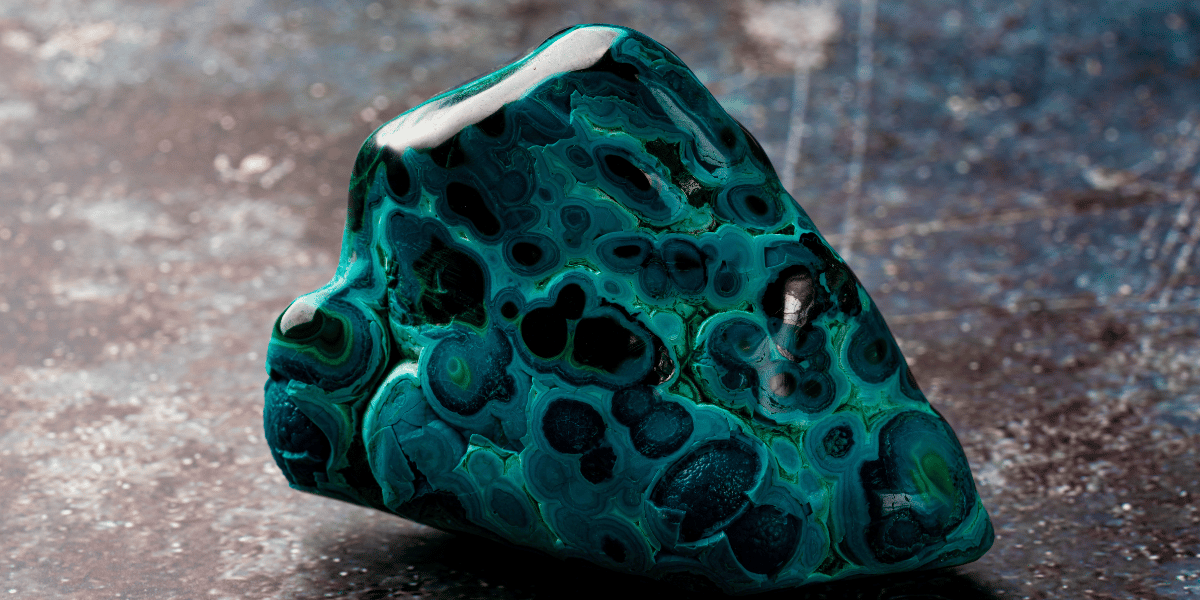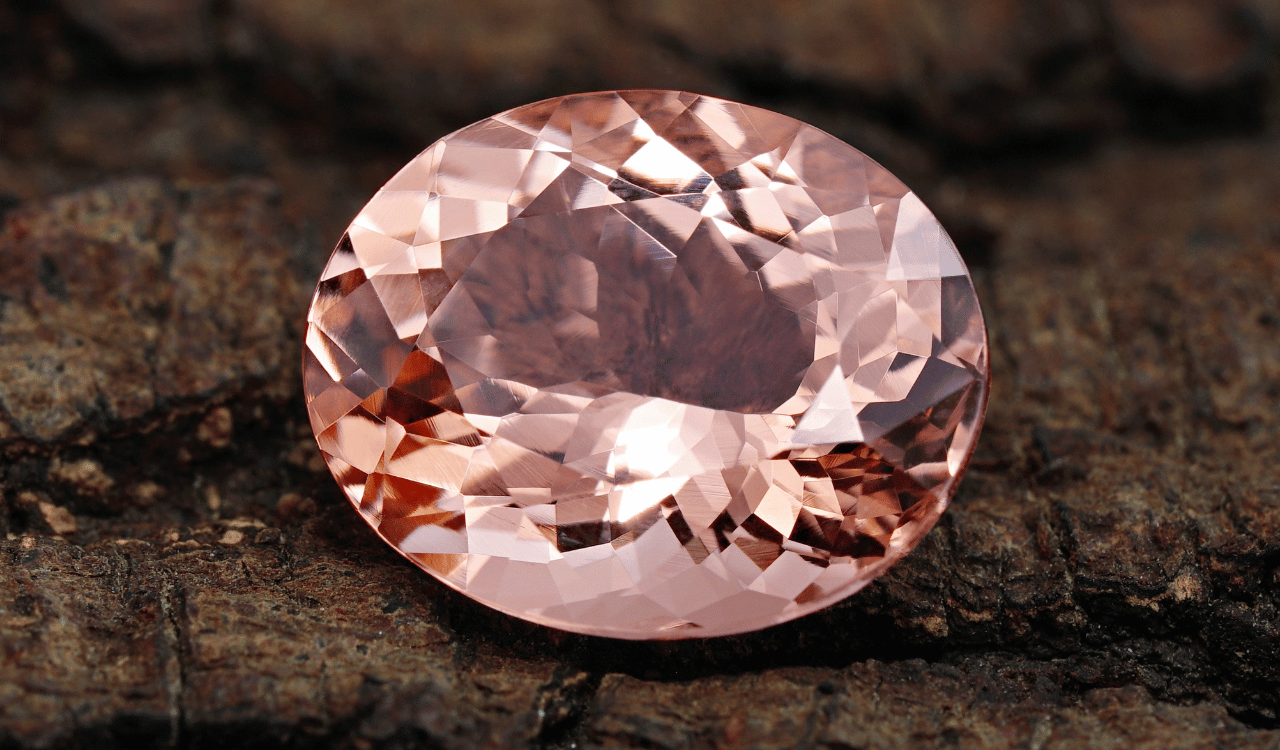The March Birthstone – The Complete Guide

Individuals born in March receive the gift of Aquamarine as their birthstone—a gem that embodies tranquility, serenity, and majesty. The captivating sea green hue of this stone has the power to instill calmness and peace, empowering you to maintain resilience and control in the face of any challenges.
What Is The Birthstone For March?
For those fortunate individuals born in March, the month boasts two distinct birthstones—Aquamarine and Bloodstone. While these gems differ in appearance, they share a common symbolism aimed at enhancing and safeguarding the wearer’s health and well-being.
Aquamarine, with its serene sea-inspired qualities, derives its name from the Latin words “aqua” meaning water and “marina” meaning the sea. Predominantly light-toned, it displays hues ranging from blue to blue-green, with darker blue stones holding higher value. Originating primarily from Brazil but also found in Mozambique, Pakistan, Zambia, Madagascar, and Nigeria, Aquamarine belongs to the Beryl family.
Forming expansive six-sided crystals, Aquamarine can grow up to a foot long, making it ideal for crafting statement pieces. This gem, often gifted on the nineteenth wedding anniversary, complements various settings with its minimal yellow tones. Beyond aesthetics, Aquamarine is believed to protect sailors, cool tempers, and historically served as an antidote to poisoning.
Throughout history, Aquamarine has been associated with love and solidarity, with legends suggesting its role in resolving conflicts and attracting friendships. Worn by warriors for victory, it was also used in ancient medicines for various ailments, especially eye afflictions. Beyond its historical significance, Aquamarine is considered a symbol in Tarot, aiding meditation and promoting emotional well-being.
Whether worn as jewelry or used in spiritual practices, Aquamarine’s cool and peaceful color complements any skin tone. It symbolizes purity, offers calming energies, and shields against negativity. Pregnant women often turn to Aquamarine for protection, and its reputed benefits include easing sore throats, thyroid issues, and allergies.
The second birthstone for March, Bloodstone, is a dark green stone with distinct red spots of iron oxide. Found in riverbeds or rocks in Australia, Brazil, and India, Bloodstone is also known as Heliotrope. Despite lacking the aesthetic allure of Aquamarine, Bloodstone is revered for its symbolism and magical properties.
Legend associates Bloodstone with Christ’s blood staining Jasper stones at the cross’s foot
to create this unique gem. While lacking the visual appeal of Aquamarine, Bloodstone holds significant symbolism, earning it the moniker “martyr’s stone.”
Bloodstone’s history traces back to ancient times, with Babylonians using it in divination and Egyptians believing in its magical properties for overcoming enemies and gaining strength. Some cultures credited Bloodstone with weather control, legal victories, and prophecy. Its magical and healing reputation dates back to 5000 BC.
Despite its varied historical applications, Bloodstone remains a popular choice today, often considered a lucky charm or amulet. Athletes and those seeking mental clarity, increased creativity, and enhanced energy hold Bloodstone in high regard. Whether used in jewelry, signet rings, or small containers, Bloodstone continues to captivate with its unique qualities.
In essence, both Aquamarine and Bloodstone, the March birthstones, offer qualities that contribute to well-being, love, youthfulness, and hope. Whether chosen for their aesthetic beauty or historical significance, these gems endure as meaningful symbols for those born in this special month.
What Are The Key Traits Of The March Birthstone?
The enchanting Aquamarine gemstone embodies qualities of courage, loyalty, devotion, and friendship.
Aquamarine elevates awareness, refines communication skills, and promotes swift responsiveness. It serves as a symbol of honesty, faithfulness, and beauty.
Much like the crystal’s soothing blue hue, individuals with Aquamarine as their birthstone lead lives marked by calmness, peace, integrity, and honesty. They are forthright and sincere, adept at expressing thoughts and feelings with respect and diplomacy. Aquamarine facilitates the formation of new friendships and the expression of affection for others.
Long revered as a symbol of youth, health, and hope, Aquamarine’s captivating color spans from pale to deep blue, reminiscent of the sea. It adds a stunning touch to spring and summer attire.
The birthstone suggests an affectionate, playful, and sociable nature. Those born in March tend to fall in love easily, seeing the best in everyone. They indulge in daydreams of happiness and romance while valuing their peace, sometimes exhibiting a secretive demeanor.
The sea-inspired blue-green color of Aquamarine inspires qualities of truth, trust, and letting go. It symbolizes happiness and eternal youth, contributing to the perpetually youthful outlook of Aquamarine individuals.
People born under this birthstone display traits of calmness, contemplation, love, and spirituality. They articulate their emotions clearly without excessive sentimentality, make sound decisions promptly, and exhibit courage during challenging times. Their spontaneity and adventurous spirit emerge when the moment calls for it.
Wearing Aquamarine is believed to rekindle love and fortify marriages, instill courage, and enhance overall happiness. The gemstone is also linked to creativity, self-expression, hope, and determination, fostering love and encouraging a youthful embrace for good health.
Individuals with Aquamarine as their birthstone possess attractive, sexy, and charming personalities. Despite occasional shyness and reserve, their magnetic charm shines through. They may harbor a secretive side but naturally possess an honest, sympathetic, and generous nature.
Aquamarine individuals find joy in serving others, indulging in daydreams and fantasies, and relishing travel while enjoying the spotlight. They prioritize peace and serenity in their lives, steering clear of anything that disrupts their tranquil existence. While sensitive to the needs and emotions of others, they remain trustworthy, appreciative, and committed to returning kindness.
Despite occasional bouts of anger or a tendency towards revenge, they may make hasty decisions in choosing partners. Their homes are adorned with special items, and they delight in playing music. At times, they withdraw into quiet moments, observing others when they feel less sociable.
Aquamarine’s Color And Its Meaning
Aquamarine commonly displays a light and transparent appearance, showcasing hues that span from blue-green to deep blue and greenish blue. The intensity of color tends to increase in larger stones, with the deepest blue tones being the most prized, and darker shades holding greater popularity than lighter ones.
In addition to Aquamarine, it’s essential to consider the striking Bloodstone as another notable March birthstone. While featuring an almost oceanic green hue shared with Aquamarine in some instances, Bloodstone stands out with distinctive red motifs resembling blood-like speckling. This characteristic symbolizes dual aspects that often captivate those born in March—both the mysteries of life and death.
Despite being a taboo subject in various cultures, individuals born in March frequently find themselves contemplating the realms beyond mortal existence. The red speckles within Bloodstone, reminiscent of life-giving blood, reflect a deep sense of curiosity and an innate willingness to offer support and nurture others, both humans and animals alike.
March, situated in the northern hemisphere, marks the arrival of spring—a season symbolizing new life and growth. This natural backdrop aligns with the qualities associated with those born in March, who often exhibit a profound appreciation for the emergence of life during this vibrant and transformative time.
Necklaces, Rings, and Jewelry
Aquamarine, a renowned semi-transparent blue gemstone, belongs to the Beryl family and shares close ties with Emerald.
In its natural state, Aquamarine exhibits a bluish-green color and is a highly valuable gemstone formed deep within mountains through intense heat.
With its distinctive color and various beautiful cuts, Aquamarine seamlessly complements any lifestyle and jewelry collection.
Having gained popularity in the early 1900s, Aquamarine prominently featured in rings and tiaras, including one of the most famous Aquamarines adorning Queen Elizabeth’s tiara.
The name “Aquamarine” originates from the Latin term for seawater, reflecting its coloration influenced by trace amounts of iron within the crystal structure. The most coveted color is a deep blue, and Aquamarine boasts a robust 7.5-8 hardness on the Mohs scale, making it suitable for diverse jewelry styles. Popular cuts include emerald and brilliant cuts, with long or rectangular shapes, while turbid stones are fashioned with a cabochon cut.
Universally flattering on various skin and eye colors, Aquamarine is a favorite among women globally due to its versatility, accessibility, and moderate pricing, trending upward in popularity.
Suitable for a range of jewelry, including brooches, pins, and pendants, Aquamarines are often flawless and come in various cuts comparable to diamonds. Premium-quality stones have minimal visible inclusions, with transparency enhancing shine and brilliance when cut correctly.
Aquamarine comes in diverse sizes, from tiny to very large, with some reaching weights of up to 100 lbs. Jewelry pieces typically range between 1-3 carats, although larger stones can reach up to 16 carats, with size impacting overall value and price.
Color, clarity, cut, and carat significantly influence Aquamarine’s value, with larger carats and unique cuts commanding higher prices, potentially reaching thousands.
When selecting the perfect Aquamarine, consider its natural blue color with green hues, achieved through high-temperature heating. The gemstone’s clarity, determined by inclusions, impacts its ability to achieve certain colors and ideal shapes. The most valuable Aquamarines exhibit no visible inclusions.
Aquamarine’s translucency, coupled with a proper cut, can result in remarkable shine. Common cuts include square, rectangular, pear, princess, and emerald shapes.
While Aquamarine is generally easily recognizable, vigilance is crucial to avoid imitations. Glass can mimic the desirable blue hue, but scratches on the surface and small air bubbles indicate a fake. Aquamarine’s hardness makes it resistant to scratching, and genuine stones will feel cold to the touch.
To preserve the stone’s condition, store Aquamarine separately from other gemstones and avoid exposure to harsh chemicals. If cleaning is necessary, soak the stone in warm water with a few drops of dish soap and gently brush with a fine bristle brush.
With proper care, Aquamarine remains a symbol of happiness and youthfulness, embodying qualities of fearlessness and protection in life’s journeys.
Bloodstone exhibits a color spectrum ranging from light to dark green, adorned with subtle or pronounced spots and stripes of red or rust.
The majority of stones feature distinct light and dark color zones, contributing to the stone’s unique and charming appearance. Achieving even coloration in Bloodstone may pose a challenge due to its characteristic color gradient, which is an inherent part of its allure.
Bloodstones can vary in translucency, spanning from nearly opaque to semi-transparent. When expertly cut and finished, the stone can showcase a captivating shine and luster, with a smooth and waxy appearance.
Depending on the stone’s size, it can be cut with facets into both unique and traditional shapes. Smaller stones often find their form as beads or feature in cameos, seals, and carvings.
Bloodstone’s beauty is particularly accentuated when fashioned into pendants or beaded bracelets. Given its rich symbolism and positive properties, many individuals opt to wear Bloodstone as an everyday amulet. Ensuring a durable and secure setting is crucial, especially for those who intend to wear it regularly.
Whether chosen as a birthday gift for someone born in March or simply as a personal ‘lucky charm,’ acquiring Aquamarine or Bloodstone offers an affordable means to appreciate the distinct qualities of these gemstones.
How Much Does The March Birthstone Cost?
The quality of a gemstone is often determined by its clarity, and the price can also vary based on the gemstone’s color.
Aquamarine, a timeless beauty and March birthstone, exhibits a price range of $5 to $100 per carat for low to mid-range quality stones. Mid-range Aquamarine stones over 10 carats can command prices of $150 to $200 per carat.
When inspecting Aquamarines, examine them under natural light. A genuine Aquamarine displays a noticeable greenish hue, and holding it between your palms should maintain its cold temperature. Scratch tests can be conducted, considering Aquamarines’ hardness of 7.5 to 8 on the Mohs scale, making them tougher than glass. The stone’s shape, available in various cuts such as pear, emerald, marquise, oval, and round, also influences its price. Unusual shapes may command a higher price.
Placing the Aquamarine on white paper can reveal its richness of color, with deeper hues correlating to higher prices. While Aquamarines can grow large, their price remains constant for weights beyond a carat. Rare cat’s eye formations, visible when light hits them, may cost collectors over $10,000 per carat.
Bloodstone, another beautiful March birthstone, ranges in price from $20 to $150 per carat for loose stones. Genuine Bloodstones possess a bright shine, are opaque, and non-porous, making them suitable for various cuts like cabochons, cushions, emeralds, octagons, ovals, and rounds. Bloodstone cabochons set in 18-carat yellow gold or sterling silver create stunning jewelry, and its versatility makes it an affordable gemstone.
Bloodstone beads, often used for necklaces, are visually appealing, and the ideal length for such necklaces is approximately 18 inches. Bloodstone beads also make lovely bracelets, with sizes ranging from 6 millimeters to 10 millimeters delicately covering the wrist. When selecting Bloodstone beads, ensure uniformity in color shade and brightness for a harmonious appearance.
While Bloodstone ranks high on the hardness scale, precautions are necessary to protect it from scratches, sharp blows, and exposure to chemicals that could affect its natural beauty. Additionally, Bloodstone should be kept away from extreme temperature changes and moisture to preserve its polish.
My Final Thoughts On The March Birthstone
Ancient mariners held the belief that Aquamarine, etched with the likeness of Neptune, the sea god, served as a protective talisman against the perils of the ocean.
Delicate, pale blue Aquamarine gemstones are emblematic of love, hope, youth, and good health. Adorning this gemstone can stir love in your life, fortify your confidence and courage, and elevate your overall happiness.
The gemstone’s influence extends to mental clarity, dispelling negative energies, fostering creativity, sharpening perception, and instilling a sense of hope in your life.
With its calming energies, Aquamarine acts as a stress-reliever and aids in quieting the mind, rendering it an excellent companion for meditation.
Whichever March birthstone you choose to don or carry, rest assured that it will purify your aura, align your chakras, and provide a sense of safety and protection.




